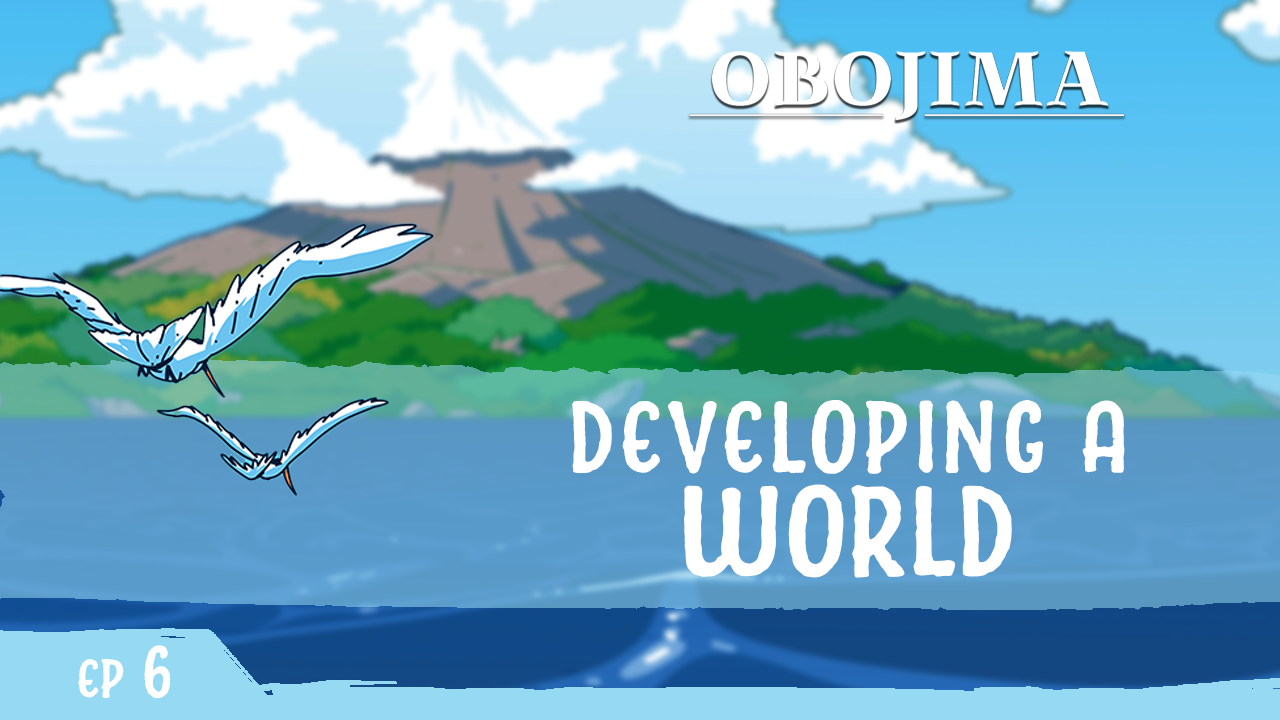
The Obojima Podcast the Blog | Episode 6 Building a World's Culture in D&D: The Culture and People of Obojima
This blog post was made using dictation summary software, and posted for SEO purposes. If you really want to know what this episode is about, check out the full episode here: https://youtu.be/zCV5bzTZE1c?feature=shared
It’s episode 6! Welcome to the blog of the Obojima Podcast! This podcast is a deep dive into the creative process of creating Obojima: Tales from the Tall Grass. First things first, let’s meet our intrepid crew of writers.
-
Jeremiah Crofton - The Creative Director of 1985 Games and the creator of Obojima.
-
Ari Levitch - Head Writer
-
Adam Lee - Head Writer
In this recorded writers’ session for Obojima, the team—Jeremiah, Ari, and Adam—gathers for their weekly conversation. This time, the discussion centers around the interplay of memory, dreams, and psychic remnants in Obojima’s cultural and metaphysical landscape. The team also explores how these elements impact adventuring, storytelling, and setting flavor.
The Island Remembers: Memory as a Living Force
The group opens with the idea that Obojima itself holds memory. It’s not just a place but an entity that stores, echoes, and even replays events through phenomena like emotional hotspots, residual hauntings, and the material presence of dreams.
-
Some locations are emotionally charged, where a particularly intense memory—joyous or tragic—has soaked into the stones and flora. These areas might play back events like a broken film reel, looped and ghostly.
-
The idea of psychic fossils arises: places where a dream or trauma was so powerful it left an imprint on reality. These can be visual, auditory, or even temporal disturbances.
Dreams and Their Influence on Magic
The team dives into how dreams interact with the spirit realm and spellcasting.
-
Some spells, particularly divination and illusion, may draw from dreams, either the caster’s or the island’s.
-
Spirits themselves may visit dreams to deliver messages or manipulate events. This is seen as both benign and eerie—sometimes guidance, sometimes mischief.
-
There’s a cultural acceptance that dreams are porous spaces, where memory, spirit, and magic intermingle.
Narrative Example: A player wakes with sand in their boots after dreaming of a ruined temple—only to find such a temple deep in the jungle, long buried.
Dreamsmiths and Memory Keepers
Obojima features characters whose whole role is the cultivation, preservation, or interpretation of memory and dreams.
-
Dreamsmiths are artisans who capture dreams in glass, pottery, or sound—creating volatile magical items that replay moments.
-
Memory keepers are honored elders or spirit-mediums who safeguard the oral histories of their communities, sometimes literally storing memories in their homes, trees, or heirlooms.
-
The idea of living memorials is introduced—spirits who exist only to remember a lost person, place, or ideal.
Memory Magic and Gameplay Possibilities
The group brainstorms how this memory-dream ecosystem can provide interactive mechanics for players:
-
Dream dungeons: Locations players can only access via sleep or ritual, where the laws of reality bend.
-
Memory fragments: Collectible echoes from the past that can reveal secrets, open doors, or enhance spells.
-
Psychic resonance: Areas that provide buffs or debuffs depending on the memory left there (e.g., a battlefield might enhance courage-based spells but hinder healing).
There’s discussion about including memory as a currency—players might trade a memory for power or passage, but risk losing something essential about themselves.
Spirits and the Dreaming World
Spirits often blur the line between memory and being.
-
Some spirits are manifestations of collective memory, rather than individual identities. An elder spirit might not be a person but a story given shape by generations of retelling.
-
The spirit realm contains dreamspace zones, places defined by emotion and belief rather than logic or geography.
-
There’s a tension in how spirits may misremember themselves, evolving over centuries as the stories people tell change—leading to unreliable or contradictory lore even among the spirits.
Cultural Approaches to Dreams and Memory
The team explores how Obojima’s diverse peoples approach memory.
-
Nakudama tend to ritualize memory, weaving it into communal celebrations or physical objects, like carved stones or memory-weavings.
-
Humans, especially in rural areas, often see dreams as omens or messages, paying close attention to symbols and dream-animals.
-
Elves, given their semi-mystical nature, may dream collectively or experience time oddly—remembering futures or dreaming of ancestors not their own.
There’s an emphasis on how dreams are not private in Obojima—they’re community-shared, respected, and sometimes feared.
Narrative and DM Tools: Unreliable Histories
To close, the group discusses how memory and dream logic provide tools for open-ended storytelling.
-
Encourage DMs to create unreliable narrators, fractured historical accounts, and dreamlike scenes where meaning matters more than accuracy.
-
Memory is fluid and affected by belief—what people think happened may shape the spirit realm more than what actually occurred.
-
This opens space for player reinterpretation of past events, shifting loyalties, and personal quests driven by lost or stolen memories.
Closing Thoughts and Future Topics
The team wraps up with enthusiasm about how this layer of psychic magic and myth enhances Obojima’s thematic depth. Future episodes may explore dreamwalking mechanics, memory-locked doors, and story-driven magical items that grow through dreamquests or emotional milestones.
They also tease a future session on schools and education in Obojima—including how knowledge is preserved, what kinds of magic are taught, and what it means to be “wise” on an island where truth is fluid.
Watch the full episode: https://youtu.be/zCV5bzTZE1c?feature=shared


